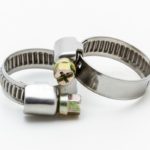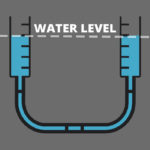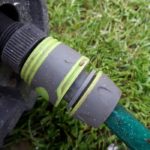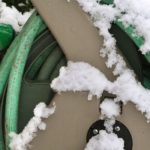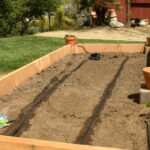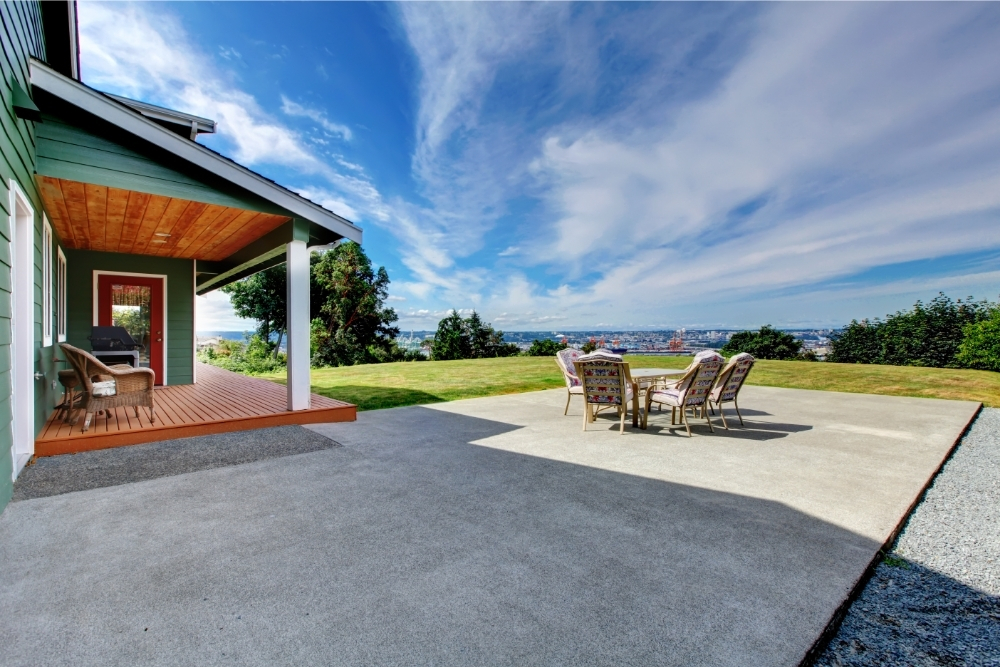Transporting water from one point to another can be a hassle without the right equipment. Thankfully, using a siphon makes it easy to move water from one reservoir into another without stress. And a good household item to use as a siphon is your garden hose.
To use a hose as a siphon, it needs to be full of water, and one end of the hose needs to be lower than the other. You can fill it by submerging it in the water you want to drain. Then, take one end of the hose to somewhere lower and allow it to drain out.
Let’s take a closer look at how this process works, what you’ll need, and what to do if it’s not working as expected. For instance, you can skip the liquid-filling step if you want, but that means you’ll have to start the siphon process by sucking water into the hose once it’s in position, which is easier said than done!
How Does Siphoning Work?
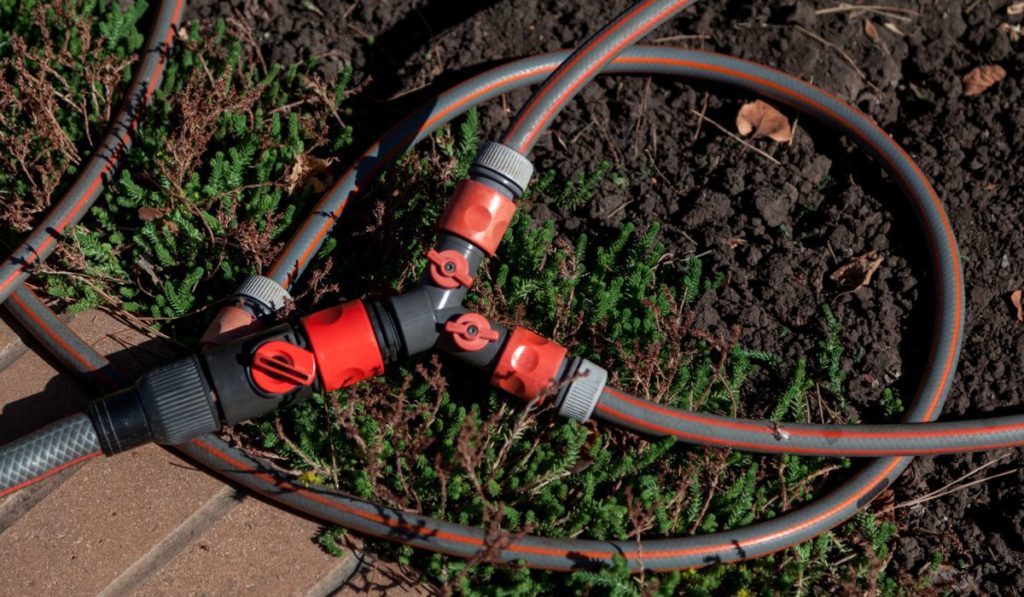
Basically, if one end of the hose is “higher pressure” and one is “lower pressure,” if you can fill it with water and submerge the end that’s at “higher pressure”, water will flow naturally to lower pressure until there’s no water left.
You don’t need to understand pressure at all to get this, which is great news. Just think of it this way: water that is physically higher up is higher pressure. So, as far as the hose is concerned, siphoning will work as long as the end of the hose that has the water coming out (draining) is physically lower than the other end of the hose. And as long as the hose is full of water, it doesn’t matter what happens to the hose between A and B.
Seems like magic right? You can get deep into the physics if you like, but that’s the simple explanation. The hard part is filling the hose with water, which you can typically do by submerging it 100% into the basin or vessel your trying to drain, and jostling it around so all the air is out.
Then, you can pull one end of the hose out, covering it with your thumb or closing it off with a valve or hose sprayer, then drag it to where you want to those to drain and start the draining. BUT the drain-location has to be lower than the other end of the hose where it’s sucking water up.
And by the way you don’t need a special hose. You can use any type of hose to drain water from a container as long as nothing obstructs the water pathway in the hose. However, using a clear siphon hose like this one from Wadoy (on Amazon), will allow you to observe the flow of water as it moves.
What Supplies Do You Need to Siphon Water?
To siphon water successfully, it’s important to have some key supplies. They include:
- Hose: This is probably the most important item for siphoning water from a container. It provides the pathway through which the water will easily flow into the empty container. As we’ve mentioned earlier, it’s advisable to use a siphon hose to observe the flow of water.
- Garden Hose Adapter: This item is optional but can be used when you wish to increase the length of your hose. With the garden hose adapter, you can easily extend your hose to siphon water across long distances. You can get a brass hose adapter like IPOW Solid Brass Adapter (on Amazon) or plastic adapters like Hotop Garden Hose Adapters (also on Amazon).
- Copper Valve: This valve is on every siphon hose, and you can add a copper valve (on Amazon) to your garden hose as well. It helps to obstruct water flow and bring about the siphoning action. It is normally located at the end of the hose, which is placed in the empty container.
When the hose is filled with water, the valve is removed to allow the water to flow. Again, this valve can also be replaced by placing a thumb at the hose end. The results are the same.
What to Do if the Water Isn’t Draining
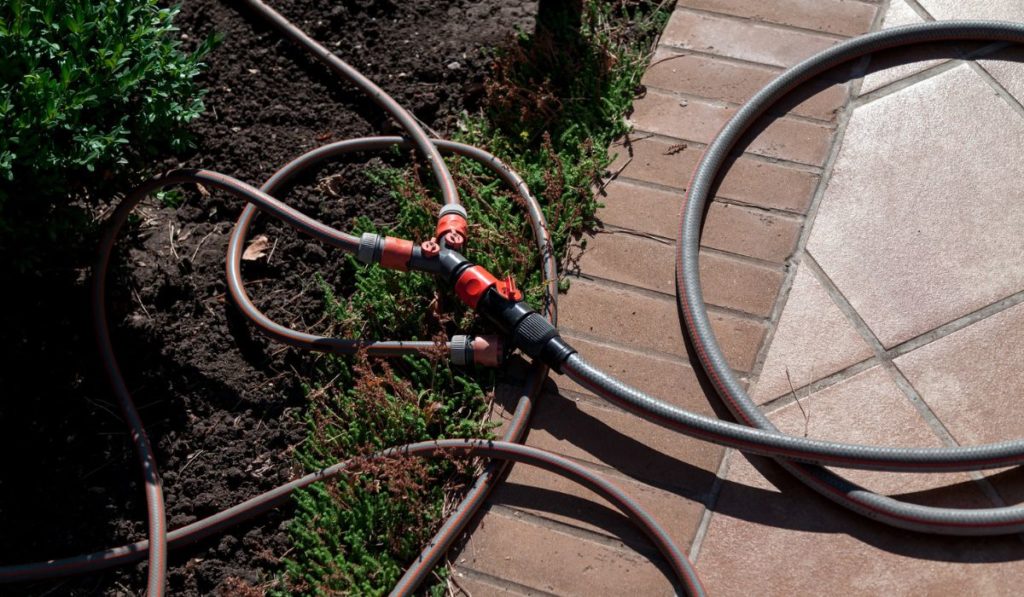
There might be cases where you try to siphon water from a container to drain it, but the water doesn’t drain. In that case, there are a few things to consider:
- Position of the Hose: The position of your hose is a very important thing to consider when siphoning. It could be that the hose is in the wrong position. It’s important to note that the siphoning process will only be effective if the hose is in a sloping position (more like an “n” shape). This will allow the water to flow more easily to the empty container.
- Not Enough Gravity: Another reason the water might not be draining is the height difference between the two containers. As we discussed earlier, the process of siphoning depends on gravity.
The higher the container you’re draining is from the other container, the faster the drainage rate. Therefore, to induce draining, you can increase the height difference between the two containers.
- Submerging the Hose: The presence of air within the hose prevents the proper flow of water when siphoning. This is one of the major reasons it’s advised to fully submerge the hose in water before siphoning.
Doing so will remove air and fill the hose with water. This is confirmed when no bubbles are seen in the water. If there’s still air in the garden hose, then you should submerge the hose in the water again to induce draining. Like we mentioned above, you can do this by sucking, but it’s actually pretty hard and you will get water in your mouth!

